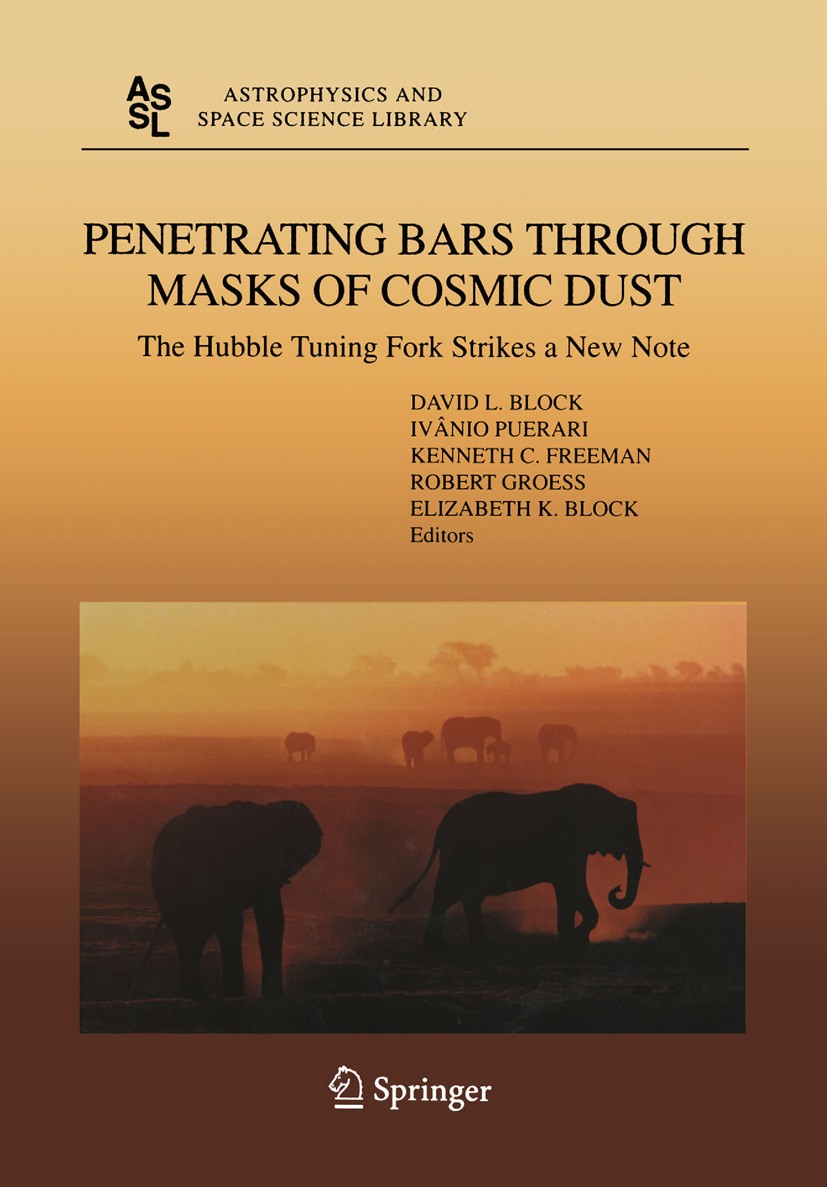| 书目名称 | Penetrating Bars through Masks of Cosmic Dust |
| 副标题 | The Hubble Tuning Fo |
| 编辑 | David L. Block,Ivânio Puerari,Elizabeth K. Block |
| 视频video | http://file.papertrans.cn/744/743374/743374.mp4 |
| 概述 | Contains 20 review articles and over 75 invited papers by top scientists.Focus on longevity of the bar phenomenon, the duty cycle of bars, bars at high redshift, the secular evolution of galaxies, gal |
| 丛书名称 | Astrophysics and Space Science Library |
| 图书封面 |  |
| 描述 | THE EDITORS: DAVID L. BLOCK AND KENNETH C. FREEMAN (SOC CO-CHAIRS), IVANIO PUERARI, ROBERT GROESS AND LIZ K. BLOCK 1. Harvard College Observatory, 1958 The past century has truly brought about an explosive period of growth and discovery for the physical sciences as a whole, and for astronomy in particular. Galaxy morphology has reached a renaissance . . The year: 1958. The date: October 1. The venue: Harvard College Observatory. The lecturer: Walter Baade. With amazing foresight, Baade penned these words: "Young stars, supergiants and so on, make a terrific splash - lots of light. The total mass of these can be very small compared to the total mass of the system". Dr Layzer then asked the key question: " . . . the discussion raises the point of what this classification would look like if you were to ignore completely all the Population I, and just focus attention on the Population II . . . " We stand on the shoulders of giants. The great observer E. E. Barnard, in his pioneering efforts to photograph the Milky Way, devoted the major part of his life to identifying and numbering dusty "holes" and dust lanes in our Milky Way. No one could have dreamt that the pervasiveness of these c |
| 出版日期 | Conference proceedings 2004 |
| 关键词 | Accretion; Dark matter; Gravity; Redshift; Universe |
| 版次 | 1 |
| doi | https://doi.org/10.1007/978-1-4020-2862-5 |
| isbn_softcover | 978-94-015-7085-5 |
| isbn_ebook | 978-1-4020-2862-5Series ISSN 0067-0057 Series E-ISSN 2214-7985 |
| issn_series | 0067-0057 |
| copyright | Springer Science+Business Media B.V. 2004 |
 |Archiver|手机版|小黑屋|
派博传思国际
( 京公网安备110108008328)
GMT+8, 2025-11-22 17:50
|Archiver|手机版|小黑屋|
派博传思国际
( 京公网安备110108008328)
GMT+8, 2025-11-22 17:50


